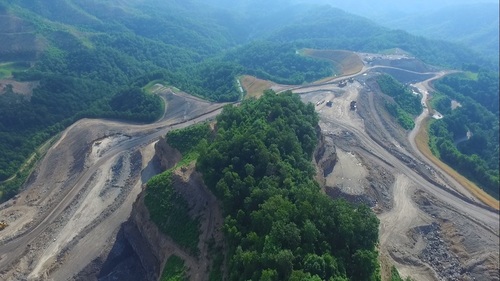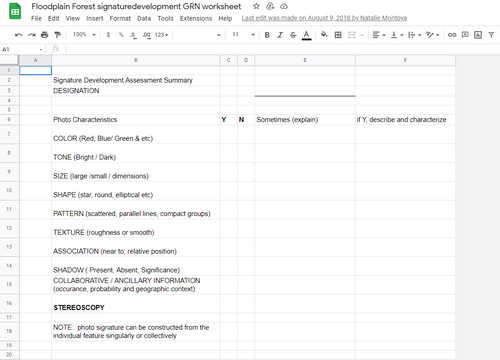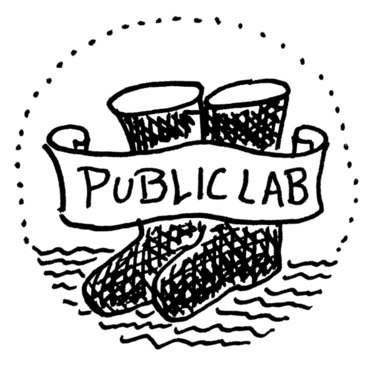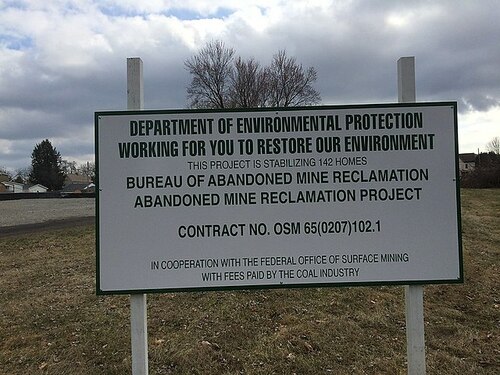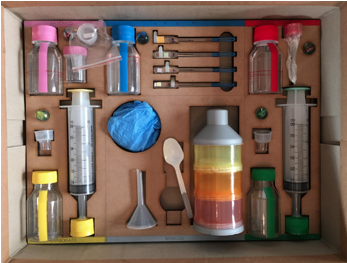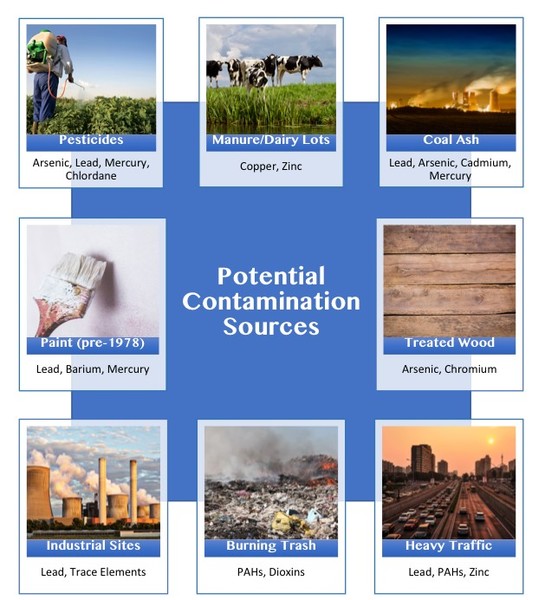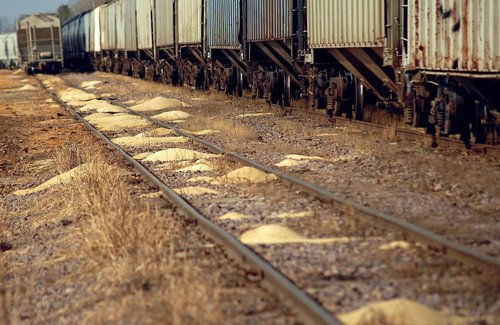sandbox-mine-reclamation
This sandbox wiki page will be updated frequently!
- What is mine reclamation?
- Community stories and projects
- Questions about mine reclamation
- Methods and activities on monitoring reclamation
- Regulations on mine reclamation
- Advocacy
- Flocculating agents and health concerns
- Further reading and resources
What is mine reclamation?
At its core, reclamation is an effort to restore harm done to a mined land’s soil health and prepare the land for another use after mining activities cease. Reclamation is ideally a two-part process undertaken from the moment mining activity begins: first minimizing negative environmental effects during mining and, at its conclusion, restoring land to a beneficial end use, such as open land, wildlife habitat, agriculture, residential/commercial use, etc. From a technical perspective, reclamation activities likely include efforts to “clean-up” the damaged landscape such as acid rock drainage management, efforts to control erosion and sedimentation, construction of tailings covers, revegetation, soil decontamination and topsoil replacement, and water treatment. While these technical aspects are needed, there is some research suggesting a more holistic, inclusive approach which aims to reframe reclamation as an “ongoing, creative process of community healing” emphasizing public participation and environmental justice concerns (Rethinking remediation).
This wiki serves to collect projects, methods, research, and questions related to mine reclamation. Help this resource grow by editing this page here!
Community stories and projects
Public Lab community projects related to mine reclamation will appear here
| Title | Updated | Version | Views | Likes | |
|---|---|---|---|---|---|
| The Mountains and Mines Monitoring Project | about 2 years ago by stevie | 12 | 5,072 | 3 | |
| The Sand Sentinel Program | over 3 years ago by stevie | 24 | 3,722 | 2 |
More stories related to mine reclamation
- “Citizen scientists uncover water quality violations in Kentucky national forest” from Appalachian Voices.
Questions about mine reclamation
Questions tagged with question:mine-reclamation will appear here
| Title | Author | Updated | Likes | Comments |
|---|---|---|---|---|
| What are observable signs of improper reclamation practices at or around mining sites? | @bhamster | about 2 years ago | 0 | 2 |
| What are plausible uses for reclaimed mining land? | @laurel_mire | about 2 years ago | 0 | 1 |
| How do I find the reclamation permit for an active mine? | @bhamster | about 2 years ago | 0 | 1 |
| What pieces of information and what level of detail should communities look for in a mining land reclamation plan? | @laurel_mire | over 2 years ago | 0 | 0 |
| Is there federal-level recourse that communities can take when mine reclamation is not being done properly? | @bhamster | over 2 years ago | 1 | 1 |
| Enforcement on inactive permits? | @ekpeterman | over 2 years ago | 1 | 3 |
Methods and activities on monitoring reclamation
Photo documentation
Kinds of data produced: Visual records of observable reclamation permit violations / compliance, or reclamation progress.
Examples of permit violations are explained in these posts:
METHODS:
Aerial photography and videography
Photography combined with Normalized Difference Vegetation Index (NDVI) to monitor plant growth over time on reclaimed land
- NDVI and NRG wiki page: contains information on what the NDVI is, questions other community members have asked about NDVI, and activities on using this indicator of plant health.
- This paper is an example of using NDVI analysis to assess plant growth following reclamation: Abaidoo C.A., Osei Jr. E.M., Arko-Adjei A., and Prah B.E.K. 2019. Monitoring the Extent of Reclamation of Small Scale Mining Areas Using Artificial Neural Networks. Heliyon, 5(4): E01445.
Reviewing public records to detect violations
Kinds of data produced: Possible reporting violations by mine operators: missing or unexpected data, repeated limit violations. These can be reported to a state agency (source: Appalachian Water Watch Citizen Monitoring Manual)
METHODS:
Reviewing Discharge Monitoring Reports (DMRs)
- “Reviewing Discharge Monitoring Reports And Permits,” starting on pg. 7 of the Appalachian Water Watch Citizen Monitoring Manual by the Appalachian Citizens Enforcement Project. This section outlines how to obtain Discharge Monitoring Reports (DMRs) and what to look for that might indicate permit violations. The whole guide is an excellent resource!
Water quality testing
Kinds of data produced: Measurements of water pH, conductivity, and other parameters. Discharge and runoff from active mining can negatively impact these water quality indicators, while reclamation activities might improve them.
Water quality data that you collect can potentially be compared with data reported on Discharge Monitoring Reports (source: Appalachian Water Watch Citizen Monitoring Manual), and compared with relevant regulatory standards.
METHODS:
Identifying sites for water quality testing
- Guidance on how to use Google topographic maps to help choose a site for water quality testing around coal mines is outlined in Ch. 3, “Taking Action: How to identify hot spots,” in the Appalachian Water Watch Citizen Monitoring Manual
Measuring water pH
pH values indicate how acidic (low pH) or alkaline (high pH) the water is. The US EPA sets its freshwater pH standard between 6.5 and 9. Drainage from mines can be acidic or alkaline depending on what minerals the water interacts with as it flows through the mining site.
Note that one study in a Mid-Appalachian watershed found that while other water quality indicators improved after reclamation, pH did not:
“...acid mine drainage was still the dominant factor leading to the overall poor water quality (low pH, high sulfate and metals) in the watershed after reclamation was completed more than 20 years ago.” Wei et al. 2010
Measuring water conductivity
Water that has more inorganic solids dissolved in it (like salts, metals, or other chemical pollutants) generally conducts an electrical current better---it has a higher conductivity. Water downstream of mining activity could occasionally have higher conductivity due to dissolved solids from discharges.
- Methods for monitoring conductivity documented on Public Lab: https://publiclab.org/methods#conductivity
- More about conductivity is on pg. 16 of the Appalachian Water Watch Citizen Monitoring Manual
Monitoring soil health
Kinds of data produced: Measurements of soil pH, heavy metal concentrations, activity of microbial and other biological life, other indicators of soil health. Similar to impacts on water quality, mining activity and reclamation can affect these soil health indicators.
METHODS:
The soil contamination wiki at https://publiclab.org/wiki/soil is where we’ve collected and organized information on soil contaminants and testing methods. Below are some resources that might be particularly useful in monitoring or evaluating mine reclamation.
Activities
Activities tagged with activity:mine-reclamation will appear here
| Title | Author | Updated | Likes | Comments |
|---|---|---|---|---|
| Finding reclamation plans and permits for mines | @bhamster | about 2 years ago | 0 | 1 |
Activities should include a materials list, costs and a step-by-step guide to construction with photos. Learn what makes a good activity here.
Regulations on mine reclamation
Advocacy
Communicating expectations from Chippewa County residents concerned with frac sand mines
Post by @bhamster 1 | over 2 years ago
- Coal River Mountain Watch resources: specific to the state of West Virginia, this is an extensive list of resources for community members including a guide to citizen enforcement options, how to file complaints with relevant WV and federal agencies, and much more.
- Citizens Guide To Coal Mining and Reclamation in Indiana: specific to the state of Indiana in the US but provides useful information on opportunities for public participation.
Flocculating Agents & Health Concerns
Acrylamide is a chemical contaminant found naturally in certain foods, in cigarette smoke, and used widely for manufacturing and industrial processes. When starchy foods like potatoes and grains are heated, sugars and an amino acid called asparagine may react to form acrylamide. In industrial settings, acrylamide is used in monomer production and polymerization as a flocculating agent. Flocculation is a process used widely across industries to form large aggregates from smaller, dispersed particles. Aggregates are termed flocs and may settle, rise, or be easily filtered out of the liquid (source).
Acrylamide is a known carcinogen & neurotoxin in animals and is currently under study by the FDA and the National Toxicology Program (source, NTP study). While everyday normal exposure is low, acrylamide is still a human health concern. Higher exposure to acrylamide may occur for people in occupations like mining. Polyacrylamide (a polymer of acrylamide) is used in coal washing as a flocculating agent (source). Polyacrylamide exposure may also be a concern during reclamation activity if hydroseeding is used. Hydroseeding (mentioned here) is a method of soil erosion control used in mountaintop removal mining and frac sand mining. You may be able to spot it if you look for “the green stuff” sprayed to hold soil in place so grass or other vegetation will (hopefully) grow on previously mined land. In addition to human health concerns, cationic polyacrylamide is also toxic to aquatic invertebrates and can depolymerize into the probable carcinogen and neurotoxin acrylamide.
Image of hydroseed being sprayed, "L-13 Levee Ditch Infill Project" by SFWMD is marked with CC BY-ND 2.0.
Further reading and resources
- Coal mine reclamation from the Global Energy Monitor wiki
- Beckett C. and Keeling A. 2018. Rethinking remediation: Mine reclamation, environmental justice, and relations of care. Local Environment, 24:3, 216-230. PDF here.
- Kuter, N., 2013, 'Reclamation of Degraded Landscapes due to Opencast Mining', in M. Özyavuz (ed.), Advances in Landscape Architecture, IntechOpen, London. 10.5772/55796. https://www.intechopen.com/chapters/45415
Wikis related to mine reclamation
| Title | Updated | Version | Views | Likes | |
|---|---|---|---|---|---|
| Mine Reclamation | almost 2 years ago by laurel_mire | 15 | 311 | 0 | |
| Evaluating the Success of Mine Reclamation | about 2 years ago by laurel_mire | 31 | 511 | 0 | |
| Observable water quality violations related to frac sand mining | almost 5 years ago by stevie | 8 | 239 | 1 | |
| Frac Sand Advocacy Leverage Points | over 5 years ago by stevie | 35 | 578 | 0 | |
| Building a Frac Sand Economic Assessment | almost 7 years ago by gretchengehrke | 5 | 350 | 1 | |
| Butte, Montana: Centerville Neighborhood | over 12 years ago by Olivia | 1 | 297 | 2 |
